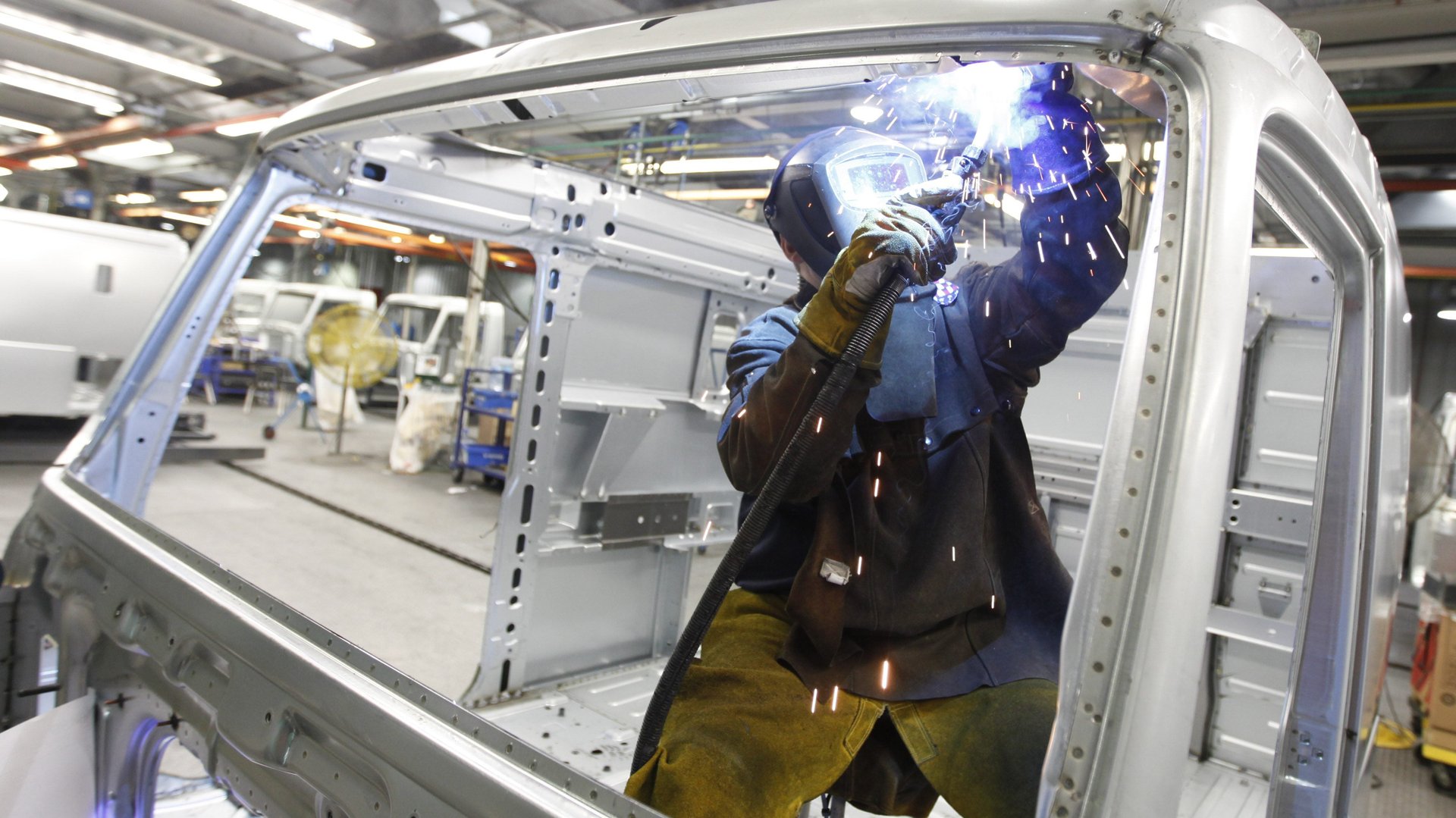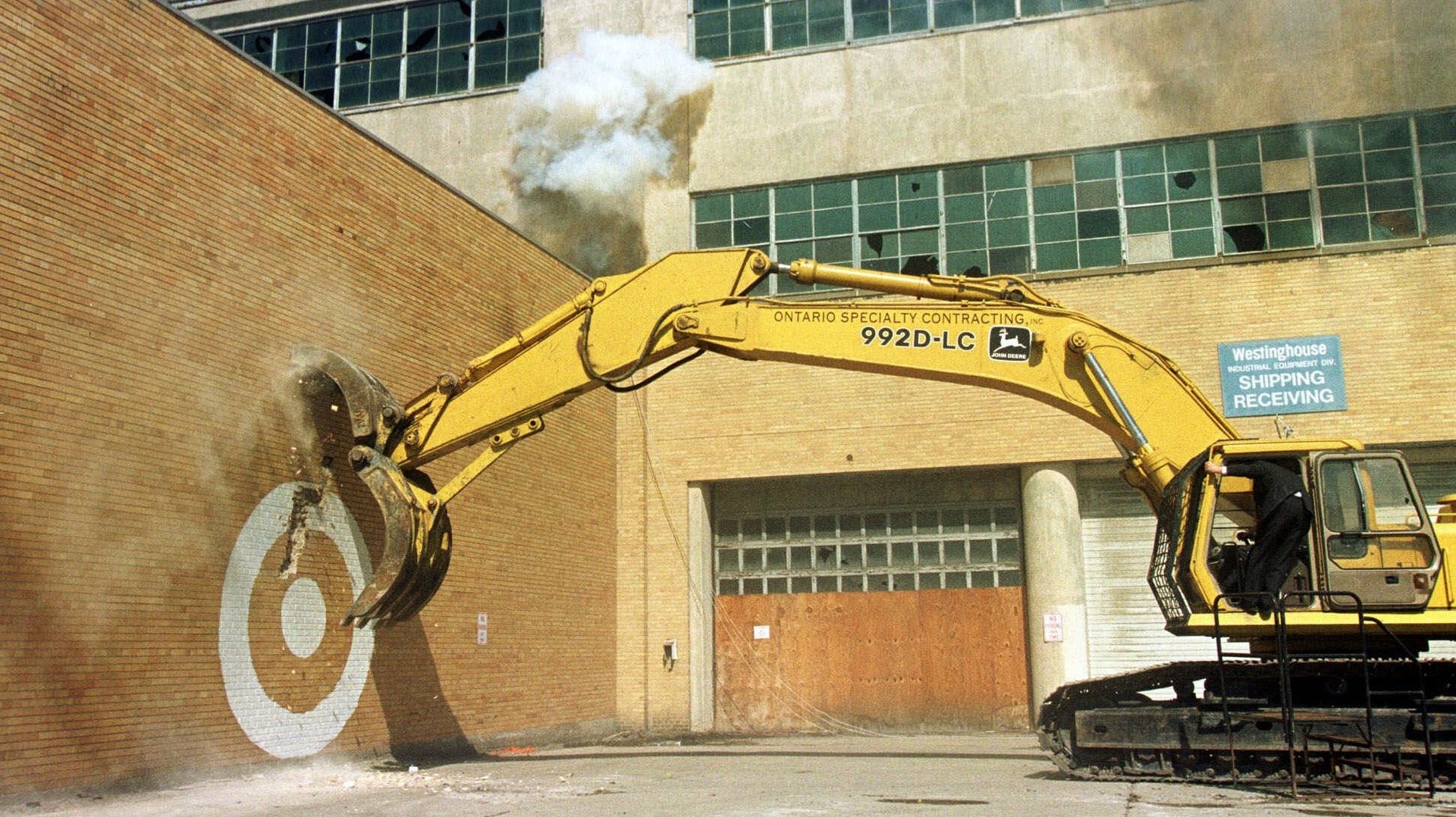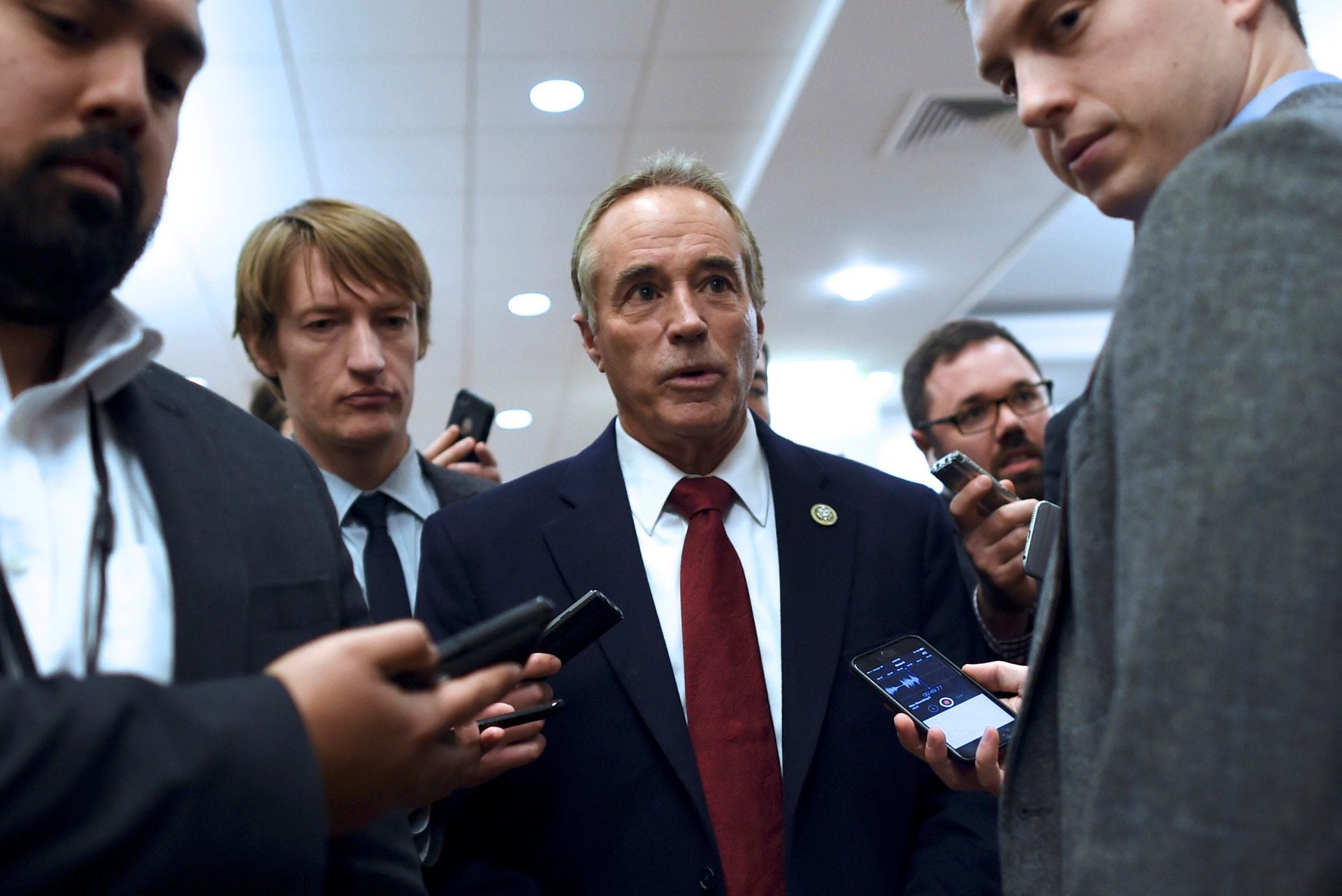The only way to save the US middle class is manufacturing, says Trump’s biggest fan in Congress
For a look at how manufacturing’s demise has hurt the US economy, and the hard questions that need to be answered before it could actually come back, there are few better places to focus on than upstate New York, and particularly congressman Chris Collins’s district in the Great Lakes region of the state.


For a look at how manufacturing’s demise has hurt the US economy, and the hard questions that need to be answered before it could actually come back, there are few better places to focus on than upstate New York, and particularly congressman Chris Collins’s district in the Great Lakes region of the state.
Collins was working for Westinghouse back in 1976, when he moved from Alabama to Buffalo, New York. The industrial company had a factory there that employed 14,000 people. Now, the factory site is the parking lot of the local airport. Upstate New York’s manufacturing sector, Collins says, has been “totally destroyed.”
Collins was one of US president Donald Trump’s earliest supporters in Congress, and one of the most vocal. The Republican representative’s enthusiasm for Trump stems in part from decades of watching industry dry up in the region. From carbon graphite to chemical plants to autos to radiators, “it is all gone,” Collins says. “What was a thriving, middle-class, blue-collar community through the 1950s, ’60s, ’70s, and into the ’80s” has disappeared.

Trump, of course, made the revival of American manufacturing a signature issue of both his campaign and the early days of his presidency. He has met with executives from the likes of Caterpillar, Ford, GE, and United Technologies, and announced deals with US companies like Carrier to keep jobs in the country—though most have been criticized as PR stunts, rather than part of a broader economic game plan.
Collins, who managed Westinghouse’s gear division in Buffalo, purchased its assets after the plant there closed and owns several other upstate New York companies. He is unapologetic about his prescription for fixing things. Companies that sell goods in the US are going to have to produce more in the US, or pay huge tariffs or taxes, he says, and American consumers are going to have to get used to paying more for goods.
Boom to bust…back to boom?
Thanks in part to the Erie Canal, a crucial link between the fertile Midwest and New York City’s port, upstate New York was a manufacturing boomland through the first half of the 20th century. But layoffs and shutdowns became commonplace over the last 30-plus years as companies globalized. In 1982, for example, the Bethlehem Steel factory in Lackawanna, New York, fired 7,300 employees in one go, citing “more modern and more cost-efficient operations in Europe, Japan and a number of third world countries.” In 2003, air conditioner maker Carrier—recently made famous for reversing a decision to relocate a plant from Indiana to Mexico—fired 1,200 workers in Syracuse, New York, after moving operations to “Asia and the south.”
Many analysts, economists, and investors believe bringing back manufacturing jobs to the US that have been gone for decades is little more than a pipe dream, a naive attempt to reverse the tides of globalization and automation, using strategies that have been proven wrong in the apparel and steel industries already.
But Collins says he sees no other choice when it comes to providing decent wages to the majority of Americans. “Those are the middle class jobs we need back in America,” Collins says. “Otherwise, where do we go?”
Higher-tech manufacturing is growing in some areas, including the Elon Musk solar plant in Buffalo that promises to bring nearly 1,500 direct jobs to the region. More basic manufacturing is going to be necessary as well, Collins says, as alternatives to jobs mowing grass, flipping burgers, or driving Ubers.
“It is kind of glib to say that everyone is going to be a scientist with a STEM education, or something along those lines. The fact is, everyone is not suited” for that sort of job, he says. Sure, parents who worked in a factory themselves may not have envisioned the same for their kids, he says, but “people would much rather have their child working in a steel mill than living in their basement.”
Right now skilled laborers like contractors, brick layers, and craftsman account for some of the best-paying middle-class jobs in the US, he said.
Collins acknowledges automation is killing manufacturing jobs, but he says that makes it even more important to move manufacturing back to the US while there are still some opportunities left. “We’re never going backward, and that makes it more important that we get these jobs back here.”
“Part of this chapter is not totally written,” he says. “The more opportunities we have the less problems we have.”
Inflation and taxes
Collins says he supports either the 20% border adjustment tax proposed by Republican legislators, or tariffs as high as 35% on imports as proposed by the Trump administration—whatever it takes to create what he considers a fairer playing field. “Some people say that’s protectionist. You know what? You’re right. That’s protecting future generations” in the United States, he says.

Collins foresees states competing with one another to offer incentives to companies hoping to bring manufacturing back to the US. New York state, he says, has plenty of “abandoned factories that could be rehabbed and brought back to life.”
He also says he can’t rule out a resurgence in unions. “Workers have the right to have a union or not,” he says.
It all suggests that prices are going to rise for consumers. But Collins is fine with that. “I’d be the first to say there is an inflationary component, but we need inflation,” he says. “I’m not talking Jimmy Carter inflation,” he specifies, referring to an era of inflation exceeding 12%, “I’m talking 4%.”
“That’s healthy and that’s something we need,” he says. “If we pay more for socks and underwear, so be it.”
The post-pollution era?
While manufacturing brought jobs and prosperity to the region which Collins now represents, it also came with devastating pollution. Lake Erie was so filthy that is was declared “dead” in the 1960s, and the Hudson River was contaminated by more than 1 million pounds of PCBs that made it so toxic that birds nesting along the shore had genetically damaged offspring.
Massive cleanup efforts have reduced the pollution substantially, but even now New York health authorities say women under age 50 and children under age 15 shouldn’t eat most fish from the Great Lakes. Bringing back manufacturing is possible without causing the same problems, Collins believes, in part because companies now know how bad some chemicals can be for the environment.
“They just didn’t know any better” in the past, he says, recalling that when his father ran an industrial solvent plant, “I used to go over to the trichloroethylene tank and the factory and sit over the fumes to clean my tie. I was inhaling these things.” (The solvent, which is mostly used to remove grease from metal parts, is a carcinogenic, the EPA says).
“We won’t get back to doing stupid things like that,” Collins says. “We have spent decades cleaning up the Great Lakes so we can eat the fish.”
He nonetheless also supports Trump’s plan to reduce environmental regulations. “None of us want to go back to any kind of polluted water, air, or land,” Collins says. “But there’s a fine line where we cross to the land of stupidity” by regulating emissions to an extent “that drives our companies out of business.”